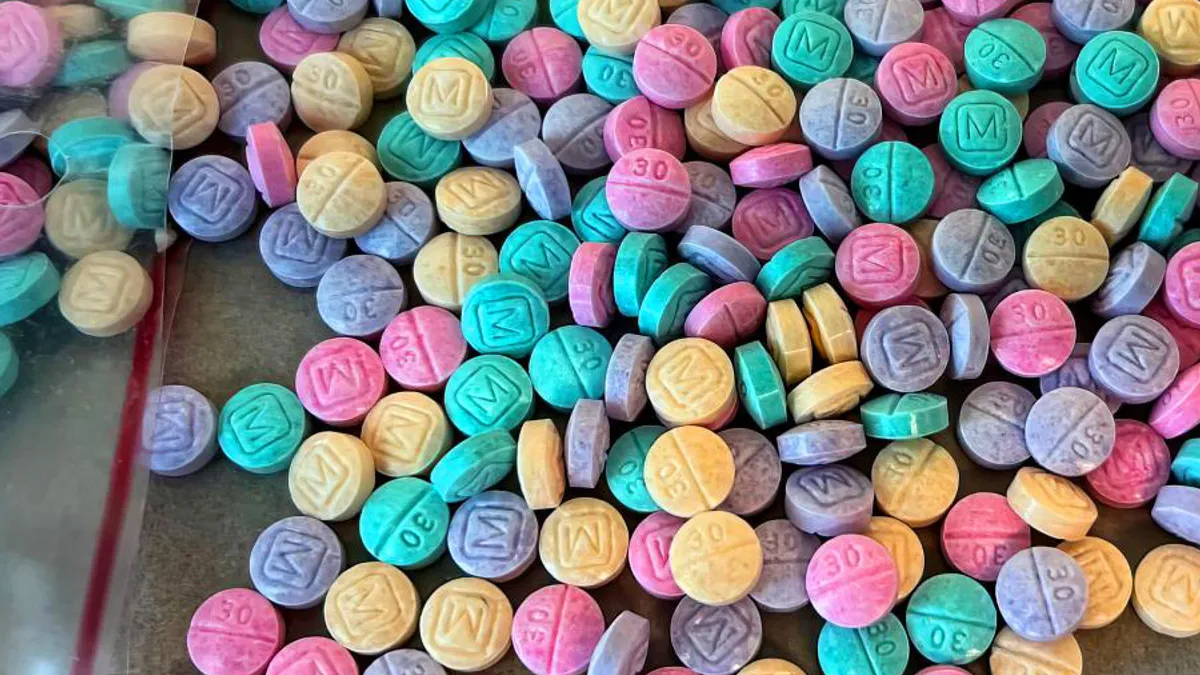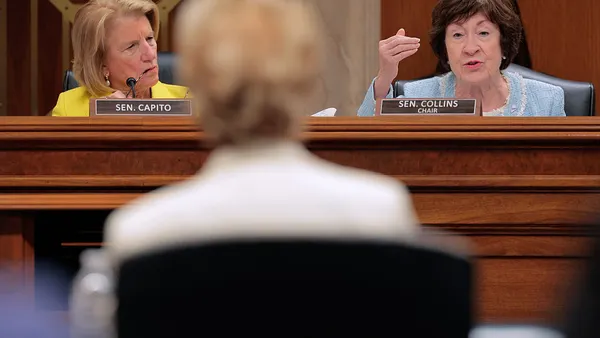Dive Brief:
- Illicitly manufactured fentanyl remains one of the biggest risks to teenagers, but schools, families and communities can adopt strategies to reduce use and deaths, said panelists during a Tuesday webinar hosted by the U.S. Department of Education.
- Fentanyl, a highly potent synthetic opioid, is responsible for a 152% increase in drug-induced deaths of 14- through 18-year-olds from 2018 to 2021, according to federal research compiled by advocacy group Song for Charlie. Yet a survey by the group found 58% of teens ages 13-17 described fentanyl as dangerous, which is just slightly higher than the 54% who said cigarettes were dangerous.
- Panelists, who included researchers, drug experts, advocates, grieving parents and others, said while educators can adopt several approaches to combat the risk of fentanyl, what students, families and teachers need the most is more knowledge about why fentanyl is so dangerous and how to curb its use.
Dive Insight:
"If we can close this knowledge gap, we believe that we can help to bring down the the number of teen deaths from fentanyl," said Jennifer Epstein, director of outreach and education for Song for Charlie, which she joined after her son Cal died in 2020 from taking an illicit "fake pill" made with fentanyl to look like a real prescription pill.
The webinar — the first of two focusing on fentanyl dangers and solutions — was targeted to state and district education leaders, school administrators, student support personnel, educators, parents and education stakeholders.
"This community of educators and people on the line today, you're on the frontline working with kids and we think that you can help to solve this problem by helping to share this information with your community, the parents and kids in your community so thank you," Epstein said.
After the Beaverton School District in Oregon mourned the loss of several students three years ago due to fake pills, the district went into reaction mode by taking several approaches, Kristen Gustafson, a curriculum specialist in the district, said during the webinar.
The district partnered with Song for Charlie to raise awareness. It also provided lesson plans to teachers, held parent information sessions with speakers, stocked naloxone in its secondary schools, implemented a K-12 social-emotional curriculum, and added substance use specialists in the district to help with intervention rather than suspending students because of use or addiction.
Gustafson added the district also emphasizes life skills in health lessons to help students avoid experimenting with drugs and to use effective resources to support their mental health.
Several panelists spoke about why fentanyl is dangerous and how teens are obtaining it. Illicit fentanyl is very potent, fast acting and difficult to detect because just a small amount can be lethal.
According to the U.S. Drug Enforcement Administration, drug dealers are selling fake pills designed to look like legitimate prescription pills on social media sites popular with teens.
It's hard to identify the fake pill from the pharmacy-issued one, panelists said. Fentanyl can also be mixed into other drugs and vape pens.
"I think it's a harsh reality that adolescents should be aware of that potentially, their parents may have experimented with drugs when they were adolescents and been perfectly fine but this is just not the same. Drug supplies that have existed in the past — this is far more dangerous," said Emily Einstein, chief of science policy at the National Institute on Drug Abuse.
The second webinar on preventing and addressing fentanyl use will be held Feb. 8.








 Dive Awards
Dive Awards




